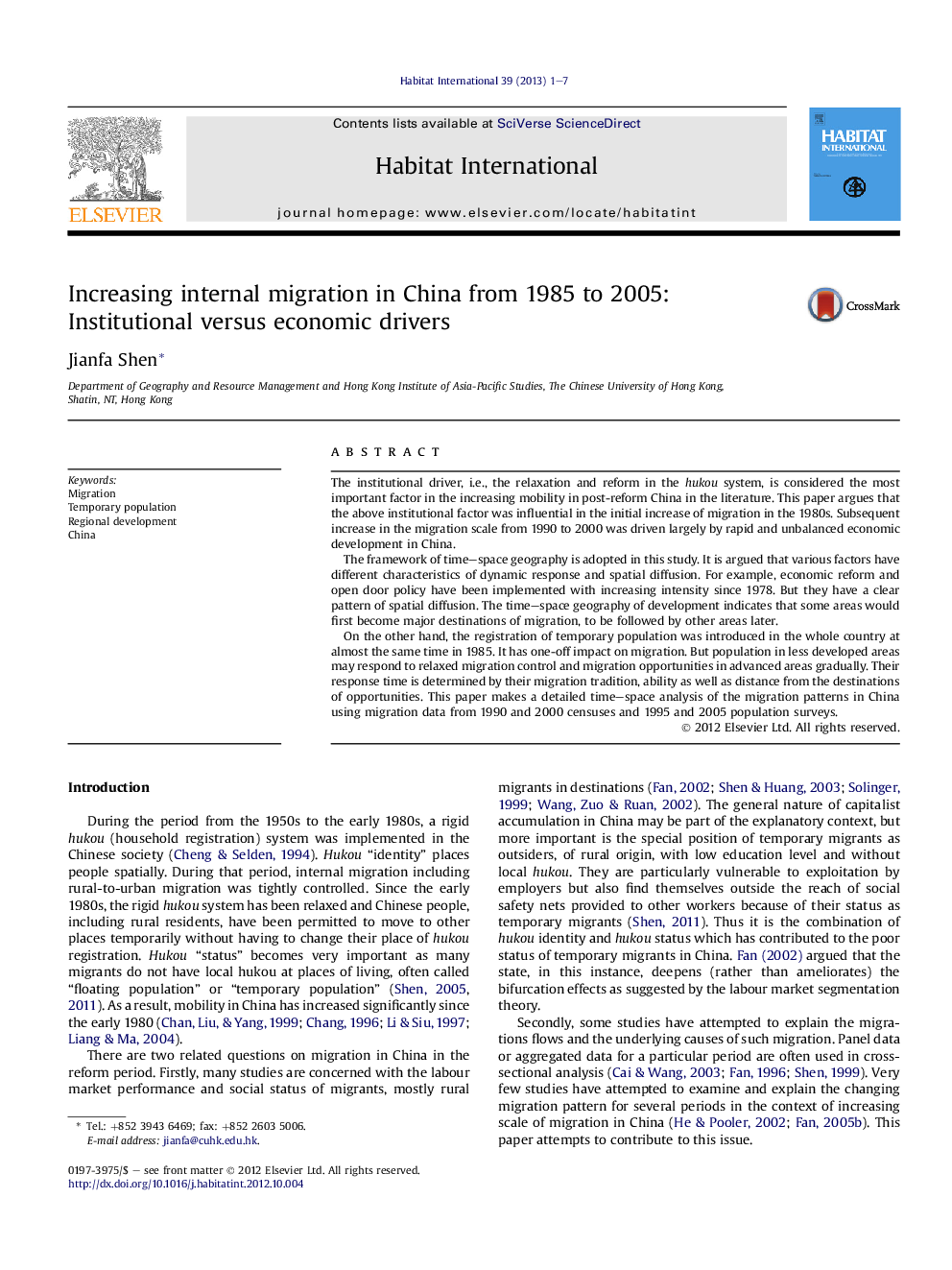| کد مقاله | کد نشریه | سال انتشار | مقاله انگلیسی | نسخه تمام متن |
|---|---|---|---|---|
| 1048217 | 1484503 | 2013 | 7 صفحه PDF | دانلود رایگان |

The institutional driver, i.e., the relaxation and reform in the hukou system, is considered the most important factor in the increasing mobility in post-reform China in the literature. This paper argues that the above institutional factor was influential in the initial increase of migration in the 1980s. Subsequent increase in the migration scale from 1990 to 2000 was driven largely by rapid and unbalanced economic development in China.The framework of time–space geography is adopted in this study. It is argued that various factors have different characteristics of dynamic response and spatial diffusion. For example, economic reform and open door policy have been implemented with increasing intensity since 1978. But they have a clear pattern of spatial diffusion. The time–space geography of development indicates that some areas would first become major destinations of migration, to be followed by other areas later.On the other hand, the registration of temporary population was introduced in the whole country at almost the same time in 1985. It has one-off impact on migration. But population in less developed areas may respond to relaxed migration control and migration opportunities in advanced areas gradually. Their response time is determined by their migration tradition, ability as well as distance from the destinations of opportunities. This paper makes a detailed time–space analysis of the migration patterns in China using migration data from 1990 and 2000 censuses and 1995 and 2005 population surveys.
► A detailed time–space analysis of the migration patterns in China for 1985–2005.
► Initial increase in migration in 1980s was due to the institutional factor.
► Increase in migration in 1990s was driven by unbalanced economic development.
► The time–space geography of development determines the changing migration patterns.
Journal: Habitat International - Volume 39, July 2013, Pages 1–7